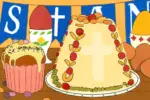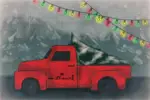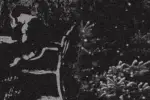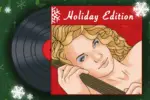In December, most people in the United States begin their preparations for the Christmas season. Glowing lights shine bright to decorate many homes and yards. Evergreens take center stage in living rooms with twinkling lights and sweet-smelling piney wood perfume. Children line up to take pictures with Santa Claus and make Christmas gift requests. Before Christmas became the popular holiday associated with December, a different holiday held the soul of the season and is where many Christmas traditions originated. This holiday marks the beginning of winter: Yule and the Germanic winter solstice.
The History of the Winter Solstice
In the Northern Hemisphere, the eve of the winter solstice marks the shortest day and the longest night of the year. The sun shines upon the Earth for a mere seven to eight hours before setting, shrouding the Earth in what feels like eternal darkness before finally rising again on Dec. 21, the first day of winter and the winter solstice.
As the wheel of the year turns, the season grows cold, days shorten, nights lengthen and it seems as though the sun is dying. On the winter solstice, we celebrate the sun’s rebirth as we step out of the darkness and into the light. At this point, the sun appears to grow stronger with each passing day, like it was reborn. The days grow longer and the nights shorter.
Before the 16th century, the people of Northern Europe feared the coming of winter and the darkness. The loss of the sun and its warmth meant no way to grow crops and a vital struggle to feed people and livestock. People put their fields to bed, slaughtered most animals to decrease food consumption and survived off of whatever food they stored from the harvest season. The slaughtered animals served as sacrifices to the gods and goddesses to return the sun and for a plentiful harvest in the coming year.
During this time, people held parties that lasted for 12 days where they feasted on these animals. They also slowly burned an entire tree each day to encourage the sun to return and spread its light and warmth upon the world again. The celebrations served to honor the gods and took peoples’ minds off of their troubles and raised their spirits.
The Wheel of the Year
Today, pagans celebrate Yule and the winter solstice as one of eight sabbats that make up the Wheel of the Year. Sabbats are pagan holidays that mark nature’s annual and agricultural cycles. Since people no longer need to rely on the seasons for food, these holidays have taken on different mental and spiritual practices that relate to the old ways of living according to the seasons. However, many of the traditions from the old ways live on in winter solstice practices today.
Evergreens
One of these conventions is using evergreens to decorate one’s home. Evergreens symbolize everlasting life because they don’t lose their beautiful green foliage as the seasons change. Multiple kinds of evergreens serve as decor for different purposes; mistletoe for fertility and abundance, holly for rebirth and protection, ivy for immortality, yew for regeneration and renewal and pine for healing and purification. One well-known evergreen decoration is a circular wreath that can symbolize everlasting life — birth, death and rebirth — or the sun.
Christmas Trees
The most famous symbol of the season stems from the long-established use of evergreen trees in the home during winter, which are known to most people as Christmas trees. Germanic people used to decorate evergreen trees in groves with small gifts of fruits, candy, cookies and flowers meant for the gods. These gifts symbolized abundance and represented the sun, the Earth and the harvest season. Nowadays, pagans combine these traditions and decorate Yuletide trees in their homes with symbolic decorations related to the winter sabbat.
Candles and Lighting
Decorative lighting began with the tradition of lighting candles to welcome the sun and ward off negative entities from homes. Candles transferred to Christmas trees, which were initially decorated with many lighted candles. However, this created a severe fire hazard. In 1882, inventor Edward H. Johnson strung up electrical lights on a Christmas tree, and this became the norm in both Christian and pagan decorating practices.
The Yule Log
Though people typically do not burn full-sized trees these days, the tradition lives on with the burning of the Yule log on the eve of the winter solstice. The fire starts with the remains of the Yule log from the previous year. Once burning, the current year’s log gets added to the fire. The fire stays lit all night until the sun’s rebirth during the sunrise on the winter solstice. Oak is the preferred Yule log wood because the strong, solid wood represents strength and triumph. Not everyone has a fireplace or safe location for an open fire, so many people take logs and turn them into decorative candle holders and burn candles instead.
A Time of Rest
In the olden days, after the festivities, it was time to embrace the winter season, a time of hibernation for both the land and its inhabitants. People would spend most of the winter in a state of rest to extend the time in which their limited resources would last. These days, pagans attempt to continue the custom on a mental and spiritual level.
Some believe that the human body is still programmed to follow the rhythm of the changing seasons. Many people think that it relates to why some suffer from seasonal affective disorder, a type of depression that comes and goes in a seasonal pattern. Humans no longer take the time to rest during the winter season as they did in the past, which can take a toll on a person’s mental health. So, one pagan practice involves using this time of year to slow down, enjoy the quiet, embrace the silence, accept the calmness and focus on introspection
As the air grows cold and the sun’s light dims while the winter solstice grows nigh, take this time to embrace the darkness and gain a deeper awareness of your traditions, as well as what the changing of the seasons means to you.
May Fire warm you,
Earth feed you,
Water quench your thirst,
Air breath strength into you,
and the Spirits guide you through this the longest Winter night.
We await Father Sun’s return with the love of our Ancestors, Guardians, and Loved Ones blanketing us against the cold.
This love is the Gift we share with each other tonight.
A Gift that reaches further than any physical distance,
and is stronger than whatever weighs upon us.
May the renewing light of Father Sun’s return to us Yule morning give life to our good hopes for the Spring to come.
Seeds of hope hibernate now.
Take comfort within Mother Earth.
Grow your inner strength
to joyfully bloom anew with the dawn of next Spring.
Be Blessed.

















